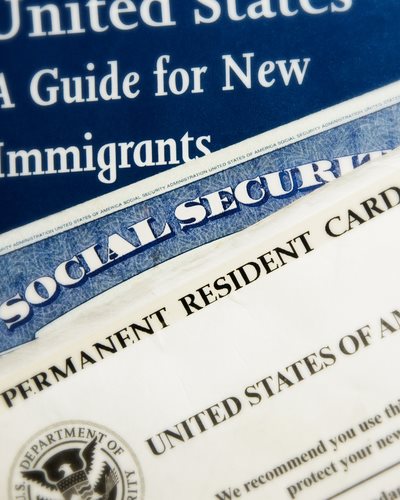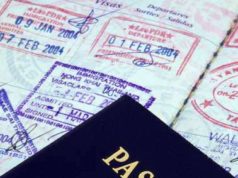
Becoming a naturalized citizen of the United States is a dream for many immigrants living in the country. With naturalization, a person gets full citizenship rights in the United States, including the right to vote, work, and live permanently in the United States. However, becoming a naturalized citizen is a complicated process, and it’s essential to know the steps involved in the journey. In this article, we will provide you with three steps to apply for naturalization citizenship.
Step 1: Meet the Eligibility Criteria
To apply for naturalization, you must first meet the eligibility criteria. Here are the requirements:
1. You must be at least 18 years of age.
2. You must be a legal permanent resident, also known as a green card holder.
3. You must have lived in the United States for at least 5 years or 3 years if you are married to a U.S. citizen.
4. You must have continuous residency in the United States. This means that you must have not left the country for more than 6 months in a year.
5. You must have good moral character.
6. You must be able to speak, read, write, and understand basic English.
7. You must pass a civics test.
If you meet all these requirements, then you are eligible to apply for naturalization. If you do not meet the eligibility criteria, then you may not be able to apply for naturalization.
Step 2: Complete the Naturalization Application
The next step is to complete the naturalization application, also known as Form N-400. This is a lengthy application, and it requires a lot of information. It’s essential to fill out the form correctly and accurately.
Here are the steps involved in completing the naturalization application:
1. Download Form N-400
The first step is to download the naturalization application form from the U.S. Citizenship and Immigration Services (USCIS) website. Fill out the form electronically or on paper.
2. Gather Documents
The naturalization application requires a lot of documents. It would be best if you gathered all the required documents before filling out the form. Here are some of the documents you may need:
– A photocopy of the green card front and back.
– Any tax returns that you have filed with the IRS.
– Two passport-style photos.
– Evidence of your current marriage (if applicable).
– Evidence of all previous marriages ended by divorce, death, or annulment (if applicable).
– Any documents related to arrests, charges, or convictions.
3. Fill Out the Application
After collecting all the documents, it’s time to fill out the naturalization application. You’ll need to provide biographical information, employment history, and residency history. You’ll also need to answer questions about your background, including criminal and marital history.
4. Attach Documents
After filling out the form, attach the necessary documents. Ensure that all documents are legible and unaltered.
5. Pay the Fee
The naturalization application fee is $725, which includes a $640 application fee and an $85 biometric fee. You can pay the fee online through a credit card or a bank transfer. You can also pay via a check or a money order.
6. Submit the Application
After completing the naturalization application, submit the document to the USCIS. Ensure that you keep a copy of the application for your records. The USCIS will then review your application and send you a notice of receipt.
Step 3: Attend the Interview and Take the Civics Test
After submitting the naturalization application, you’ll receive a notice of receipt from the USCIS. The notice will indicate the date, time, and location of your interview. At the interview, you’ll take the civics test and answer questions about your application.
1. The Interview
You’ll need to attend an interview with a USCIS officer as part of the naturalization process. The interview takes place at an office of the USCIS. Be sure to arrive promptly at the office on the specified date and time.
At the interview, the USCIS officer will review your application and ask you questions to confirm the details. The officer will look at your documentation to ensure they are consistent with your answers. The officer may also ask you questions related to your personal history, work history, and moral character.
2. The Civics Test
After the interview, it’s time for the civics test. The civics test tests your knowledge of American government, history, and civic values. You’ll need to answer six out of ten questions correctly.
The questions will cover topics such as the Constitution, United States history and geography, and the structure of the U.S. government. USCIS provides study materials that you can use to prepare for the civics test.
After you complete the interview and civics test, you’ll receive a decision on your naturalization application. If your application is approved, you’ll be scheduled for an Oath of Allegiance ceremony.
At the ceremony, you’ll take the Oath of Allegiance, and you’ll receive your naturalization certificate. This certificate proves that you’re a US citizen, and you’ll enjoy all the benefits and rights that come with it.
Conclusion
Becoming a naturalized citizen of the United States may seem daunting, but it’s an achievable goal. The three steps to applying for naturalization citizenship are clear, and by following them, you can complete the process. It’s essential to meet the eligibility criteria, complete the naturalization application, and attend the interview and civics test. By fulfilling these requirements, you can achieve your dream of becoming a naturalized US citizen.
Citizenship in the United States confers a number of benefits on those who qualify as such distinguished residents of the country, such as the ability to run for public office, the ability to participate in voting in elections for public office, and the capacity to bring foreign family members and spouses over as legal immigrants. However, it is not as if citizenship comes with a permanent stamp to one’s forehead that allows anyone to see it and know he or she is a lawful citizen. Instead, the proof must be in the writing, or rather, the legal documentation.
A naturalization certificate is an important thing to be in the possession of a foreign-born person who becomes an American citizen through the naturalization application process. Naturalization documents must be processed and distributed by the federal government in order to ensure that these notices are delivered through the proper channels; specifically a naturalization certificate must be authorized by U.S. Citizenship and Immigration Services officials. Some requisites and prerequisites for proper approval during the naturalization application process include:
1. Specific qualifications – While children with a right to citizenship through birth gain citizenship by virtue of their place of birth or their parents identity as U.S. citizens, still others gain citizenship under the Child Citizenship Act. U.S. Citizenship and Immigration guidelines have placed a list of detailed restrictions on who may and may not receive a naturalization certificate. Prior to completion of the naturalization application, residents must be able to prove beyond the shadow of a doubt that they are eighteen years or older, have held their marriageasylumrefugee
2. Filing of the naturalization application form with fees – With all phases of documentation of status, visa, green card, and naturalization, the proper application forms must be filled out in the right manner and the fees must be correctly and fully assessed.
3. The naturalization test/replacing documentation – To obtain a naturalization certificate, a final round of testing must be passed. The requirements are usually fairly minimal, however. To meet English standards, an applicant must usually be able to read and write one of three given sentences in English, pass the spoken interview completed with the submission of the naturalization application, and correctly answer six out of ten Civics questions. The process is certified completed upon a swearing of allegiance to the country, the oath of citizenship. In case the naturalization certificate is misplaced or otherwise indisposed, fees and Form N-565 for a replacement of the certificate must be submitted to Citizenship and Immigration officials.


























